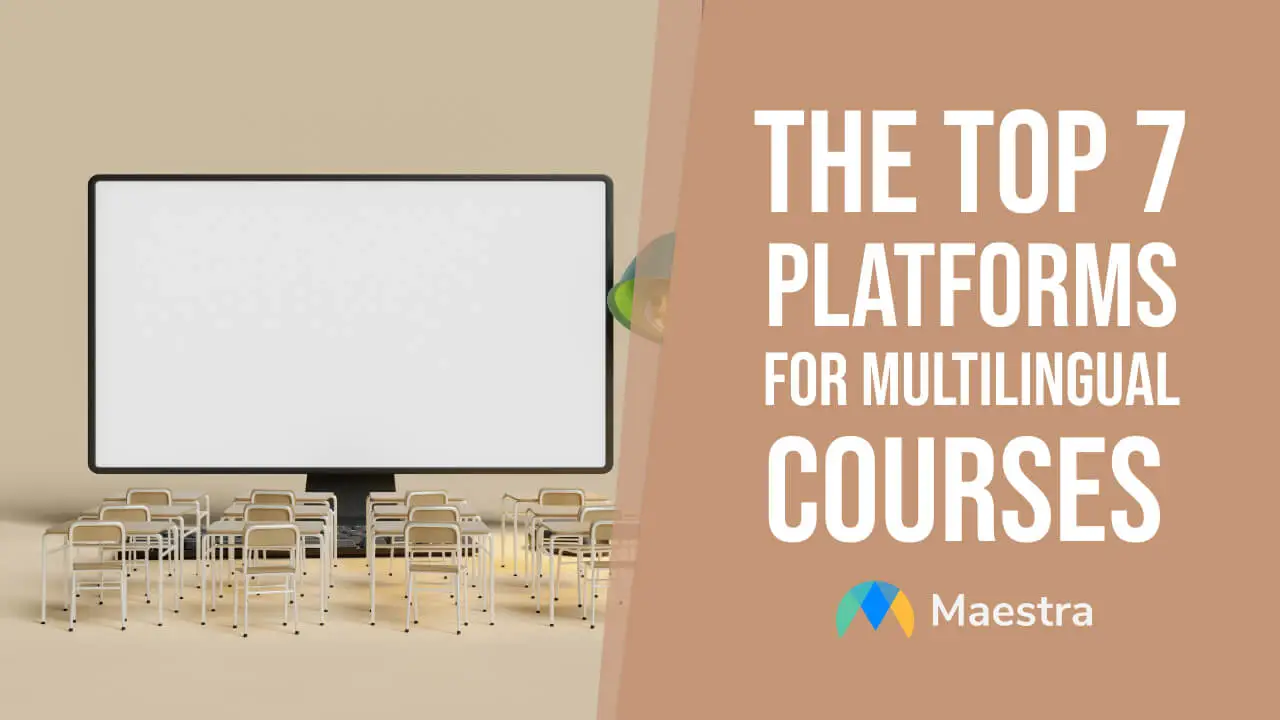Top 7 Platforms for Multilingual e-Learning Courses

eLearning offers a world of possibilities for anyone eager to learn on their own terms. From flexible courses that fit into busy schedules to affordable options for skill-building, eLearning opens doors to a range of subjects and professional paths.
But with so many platforms out there, it can be tricky to know where to start. Here, we break down what eLearning involves, typical costs, the types of courses available, and top websites to help you choose the right path for your learning journey.
Comparing the Best Multilingual e-Learning Course Platforms
| Platform | 💸Pricing | ➕Pros | ➖Cons | ⭐User Rating (out of 5) |
|---|---|---|---|---|
| Udemy | Courses typically range from $10 to $200; frequent discounts available. | - Extensive course library across various subjects.
- Lifetime access to purchased courses. |
- Course quality can vary due to open marketplace model.
- Limited interaction with instructors. |
4.5 |
| Coursera | Individual courses: $29 to $99.
Specializations: $39 to $79 per month. Coursera Plus: $399 per year. |
- Courses from top universities and institutions.
- Offers degrees and professional certificates. |
- Some courses can be expensive.
- Limited access to graded assignments without payment. |
4.7 |
| edX | Many courses are free to audit.
Verified certificates: $50 to $300. MicroMasters programs: $600 to $1,500. |
- High-quality courses from leading universities.
- Option to audit courses for free. |
- Certificates and degrees can be costly.
- Limited interaction in free audit mode. |
4.6 |
| LinkedIn Learning | Monthly subscription: $29.99.
Annual subscription: $19.99 per month. |
- Integration with LinkedIn profiles.
- Personalized course recommendations. |
- Subscription model may not suit all learners.
- Limited academic courses compared to other platforms. |
4.4 |
| Khan Academy | Free. | - Completely free educational content.
- Strong focus on K-12 subjects. |
- Limited advanced courses.
- Primarily focused on academic subjects. |
4.8 |
| Moodle | Free (open-source); costs may arise from hosting and customization. | - Highly customizable and scalable.
- Supports over 100 languages. |
- Requires technical expertise for setup and maintenance.
- Interface may feel outdated. |
4.2 |
| Skillshare | Monthly subscription: $19.
Annual subscription: $99 per year. |
- Focus on creative and practical skills.
- Project-based learning approach. |
- Limited course depth in some subjects.
- Subscription required for full access. |
4.3 |
What Are e-Learning Courses?

eLearning courses are digital learning experiences provided through online platforms, allowing learners to access educational content, training, and skill development remotely. They range from short courses to full degree programs and cover an array of topics—everything from professional development to academic studies, technical training, and personal interests. By using multimedia, interactive exercises, quizzes, and forums, eLearning courses offer a flexible and accessible learning environment that can be tailored to individual needs and preferences.
Transcribe Courses with AI for Free
7 Best Platforms with Multilingual e-Learning Courses

Expanding your eLearning offerings to a global audience necessitates platforms that support multiple languages, ensuring accessibility and engagement for diverse learners. Here are some top eLearning platforms renowned for their multilingual capabilities:
These platforms provide robust multilingual support, enabling learners worldwide to access and benefit from diverse educational content. When selecting a platform, consider factors such as the range of available languages, course offerings, and how well the platform aligns with your learning objectives.
How Are e-Learning Courses Beneficial?

eLearning courses offer numerous benefits, making them an ideal choice for learners and institutions alike. Here are some key advantages:
eLearning courses allow learners to study anytime and anywhere, making education accessible to those with busy schedules or those living in remote areas. Learners can adjust their study pace and revisit materials as needed, accommodating personal learning styles and schedules.
Unlike traditional classroom-based education, eLearning often has lower costs associated with tuition, travel, and materials. Many eLearning courses are also available for free or at discounted rates, enabling learners to acquire knowledge affordably.
eLearning courses can cater to a global audience by offering content in multiple languages, fostering inclusivity, and making learning accessible to non-native speakers. Platforms like Coursera, edX, and Udemy support multilingual content, enabling learners worldwide to access the same resources in their preferred language.
eLearning often provides self-paced options, allowing learners to progress according to their individual pace and comprehension levels. This flexibility is especially helpful for working professionals balancing studies with career responsibilities.
With interactive features like videos, quizzes, simulations, and discussions, eLearning courses can create a more dynamic and engaging learning experience. This format encourages active participation, enhancing comprehension and retention.
Many eLearning platforms offer instant feedback through quizzes, assignments, and assessments, helping learners understand their progress and areas for improvement. This immediacy is valuable for maintaining motivation and fostering a proactive approach to learning.
eLearning courses provide opportunities for learners to develop practical skills relevant to their careers or personal goals. Many platforms offer certifications upon completion, enhancing employability and demonstrating proficiency in various subjects.
FAQ
1. What is an eLearning course?
An eLearning course is a structured educational experience delivered electronically, typically via the internet. It encompasses various formats, including videos, interactive modules, quizzes, and readings, allowing learners to access content remotely and often at their own pace.
2. How much does an eLearning course cost?
The cost of eLearning courses varies widely based on factors such as content depth, provider, and certification. Some platforms offer free courses, while others charge fees ranging from under $10 to several hundred dollars. For instance, individual courses on platforms like Udemy can start at less than $10, whereas professional certificates or degree programs on platforms like Coursera may cost more.
3. What are the types of eLearning?
eLearning can be categorized into several types:
Asynchronous eLearning: Learners access materials at their own pace without real-time interaction.
Synchronous eLearning: Involves real-time, live interactions between instructors and learners, such as webinars or virtual classrooms.
Blended Learning: Combines online digital media with traditional face-to-face classroom methods.
Microlearning: Delivers content in small, manageable segments, focusing on specific learning objectives.
4. What is the best eLearning website?
Determining the “best” eLearning website depends on individual learning goals, preferred subjects, and learning styles. However, some widely recognized platforms include:
Coursera: Offers courses from universities and organizations worldwide, including professional certificates and degree programs.
Udemy: Provides a vast array of courses across numerous disciplines, suitable for various skill levels.
edX: Features high-quality courses from universities and institutions, including MicroMasters programs and degrees.
LinkedIn Learning: Focuses on business, technology, and creative skills, with courses taught by industry experts.
Each platform has unique features, so it’s advisable to explore them to determine which aligns best with your learning objectives.
